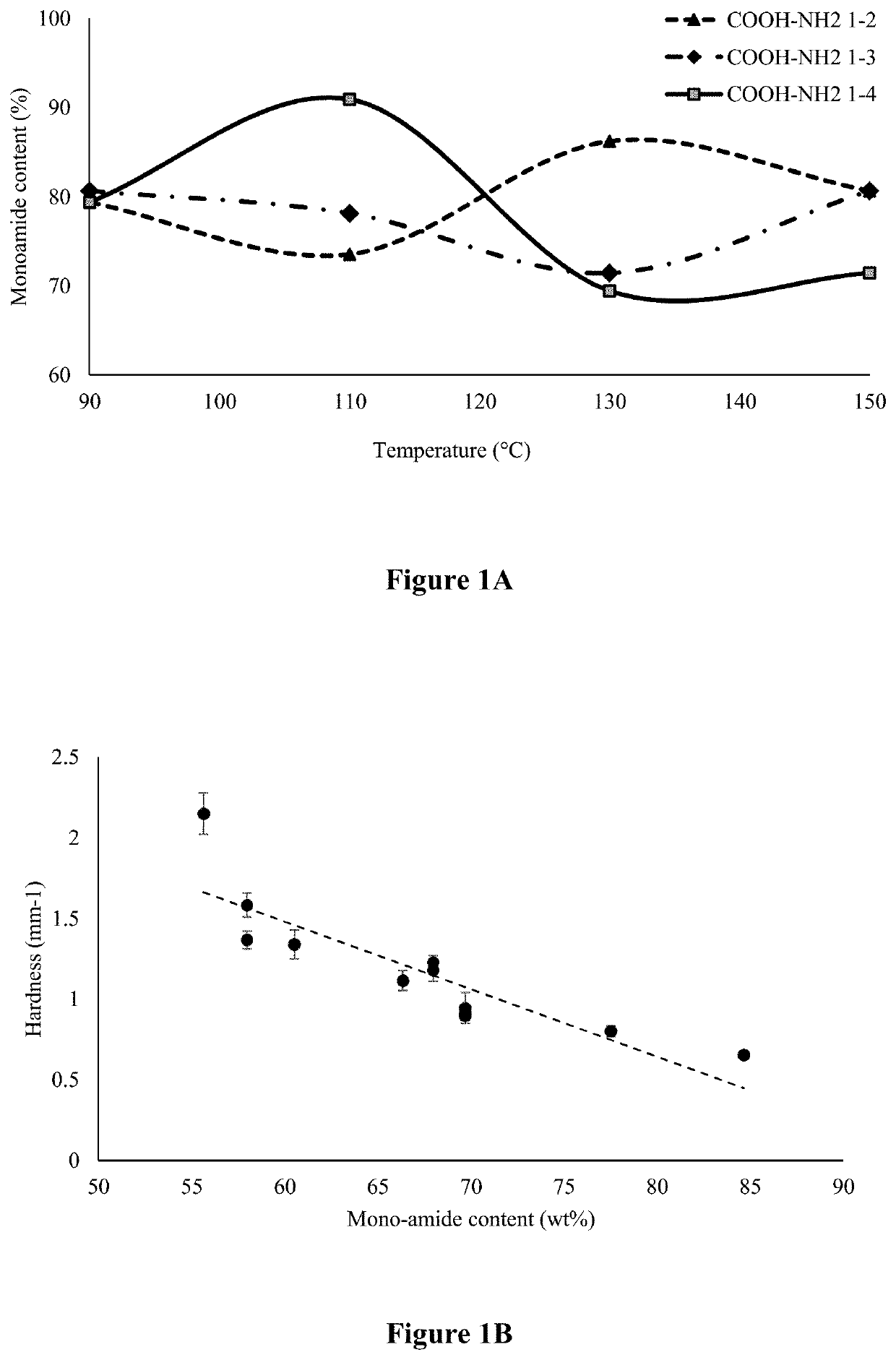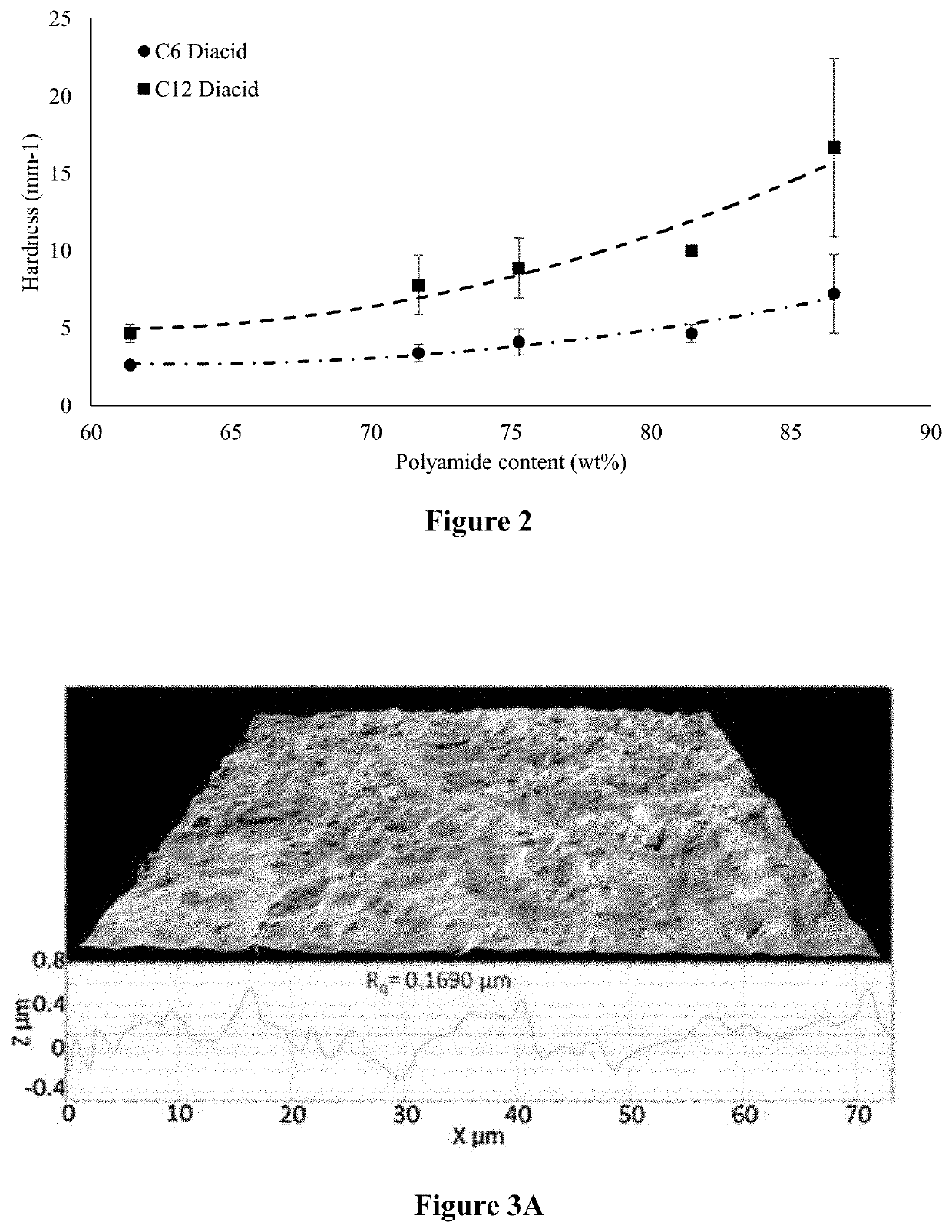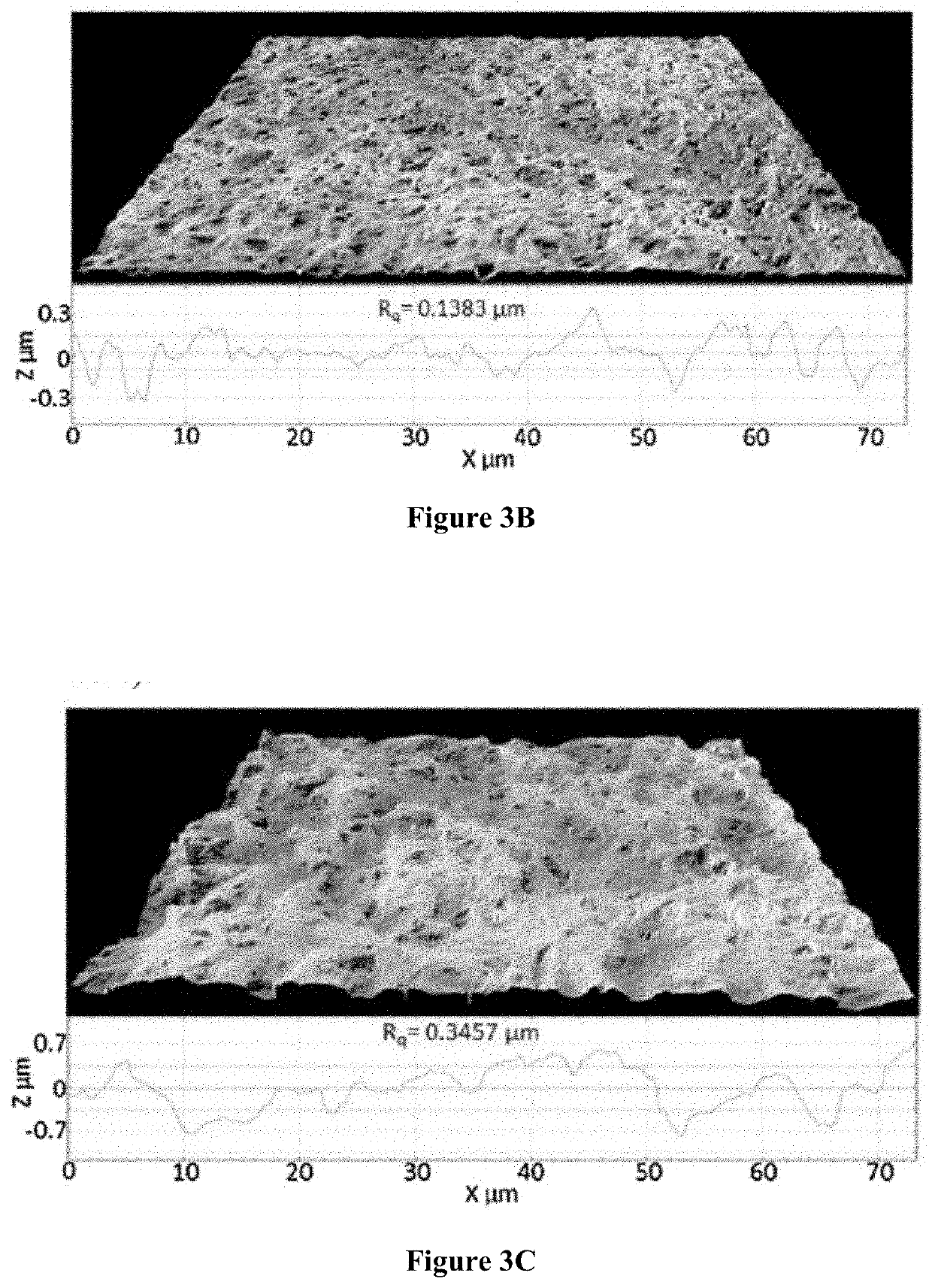Vegetable oil-based material as a substitute for carnauba wax
a vegetable oil and wax technology, applied in the preparation of carboxylic acid amides, fatty acid chemical modification, organic chemistry, etc., can solve the problems of low economic value of hydrogenated castor oil, low yield of renewable raw materials, and inability to identify low-priced renewable raw materials, etc., to increase the availability of high-priced hard wax, high hardness, and high melting
- Summary
- Abstract
- Description
- Claims
- Application Information
AI Technical Summary
Benefits of technology
Problems solved by technology
Method used
Image
Examples
example 1
for Examples 2-7
[0145]Fully hydrogenated soybean oil (FHSO) was provided by Stratas Food (Memphis, Tenn.). Hydrogenated castor oil (HCO) was provided by Acme-Hardesty CO (Blue bell, PA). Carnauba wax was provided by Michelman Inc. (Cincinnati, Ohio). Ethanolamine (ETA), ethylenediamine (ETD), cinnamic acid, dodecanedioic acid, and other chemicals were purchased from Sigma-Aldrich (St. Louis, Mo.).
example 2
on of Saturated Free Fatty Acid (SFFA) from FHSO
[0146]SFFA was produced from FHSO by a modified saponification then acidification process (Ferdous et al. “Preparation and Optimization of Biodiesel Production from Mixed Feed Stock Oil,”Chemical Engineering and Science 1(4): 62-66 (2011), which is hereby incorporated by reference in its entirety). FHSO was mixed with aqueous sodium hydroxide solution (4 M) and the molar ratio of oil to sodium hydroxide was 1:3. The mixture was heated at 100° C. for 1 hour under reflux with vigorous mixing to form a soap solution. Hydrochloric acid was then added to acidify the soap solution, and molar ratio of soap to HCl was 1:1.5. The mixture was heated at 100° C. for 1 hour and then cooled to room temperature. SFFA was collected upon solidification and vacuum oven dried. This SFFA contained 11 wt % C16 and 89 wt % C18 fatty acid. For the simplicity of expression and discussion, carbon chain length of 18 was used for this material.
example 3
of Monoamide, Diamide, and Diester with Functional Groups
[0147]The SFFA prepared was used to react with ETD to form fatty acid monoamide and diamide. Molten SFFA was slowly added to ETD at an equivalent molar ratio of (COOH to NH2) 1:2, 1:3, and 1:4 in a round bottom flask connected with a reflux condenser, and the system was then heated at 90, 110, 130, and 150° C. for 3 hours to determine the effect of temperature on reaction completeness. After the reaction, the flask was disconnected and heated for another 30 minutes to evaporate any ETD residue. The mixture of mono and diamide were characterized by 1H-NMR and the proportion of mono and diamide was determined.
[0148]To attach a benzene ring structure, cinnamic acid was used to react with the monoamide in the mixture from the steps above. To evaluate the effect of diacid reacting with the free NH2 group and increasing chain length on texture properties, adipic acid (C6) and dodecanedioic acid (C12) were selected to link two units ...
PUM
| Property | Measurement | Unit |
|---|---|---|
| melting point | aaaaa | aaaaa |
| melting point | aaaaa | aaaaa |
| melting point | aaaaa | aaaaa |
Abstract
Description
Claims
Application Information
 Login to View More
Login to View More - R&D
- Intellectual Property
- Life Sciences
- Materials
- Tech Scout
- Unparalleled Data Quality
- Higher Quality Content
- 60% Fewer Hallucinations
Browse by: Latest US Patents, China's latest patents, Technical Efficacy Thesaurus, Application Domain, Technology Topic, Popular Technical Reports.
© 2025 PatSnap. All rights reserved.Legal|Privacy policy|Modern Slavery Act Transparency Statement|Sitemap|About US| Contact US: help@patsnap.com



